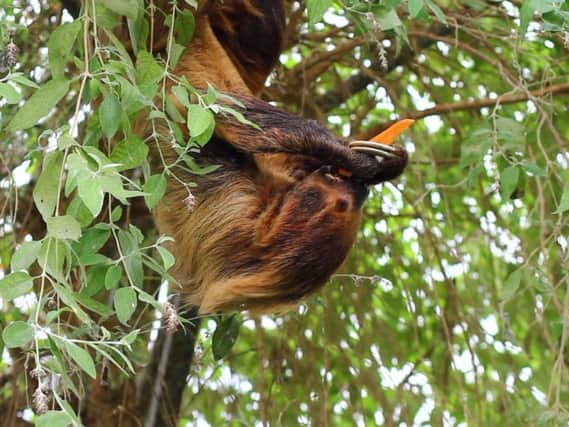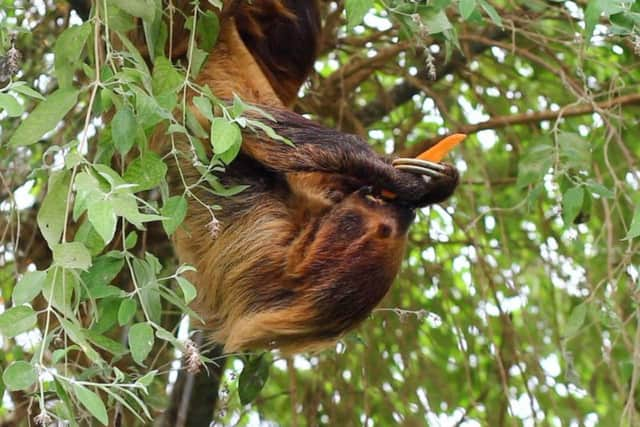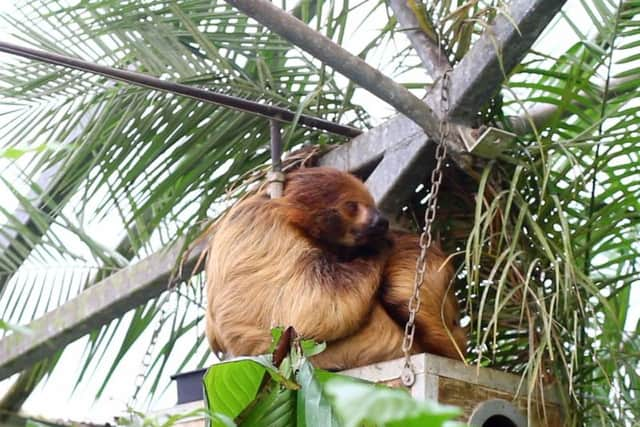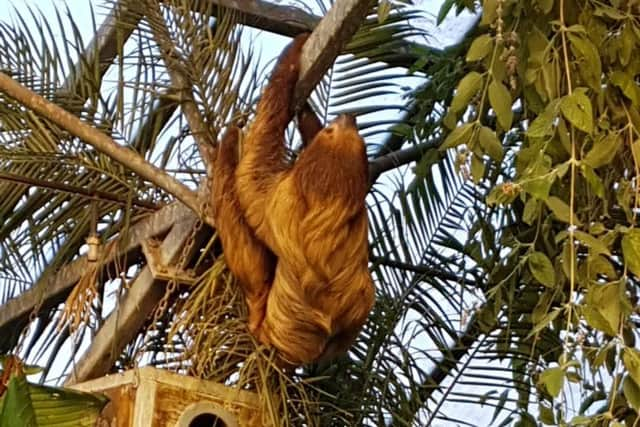Hang out with 'Mr Sloth' - he's the newest resident at this wildlife park near Worksop


The Tropical Butterfly House at North Anston has heralded the arrival of its first ever sloth.
Born in Amsterdam, the park's new resident has been living in Hamerton Zoo, Cambridgeshire, for the last 18 years where he was never named but simply referred to as Mr Sloth.


Advertisement
Advertisement
At 29 years old, the male Linnaeus’s two-toed sloth is now settling into his new home in the heights of the Butterfly House where his neighbours include butterflies, lorikeets and turtles.
Animal team leader Abigail Carter, who was part of the team which undertook the two-hour journey to bring him to the park, said: “Like the cliché says, our sloth slept all the way to his new home!
"Having him here at the wildlife park is such a fantastic move forward for us and I have no doubt he will be very popular.
"It not only gives us the chance to educate the public on these incredible animals the opportunity to highlight the effects of deforestation to sloths and other animals around the world.


Advertisement
Advertisement
"I always find people feel more connected and more likely to listen about conservation issues when they can experience the animals in person.”
Sloths are native to South America and are unique in the animal world for spending most of their time upside down. They are solitary creatures and can live up to 50 years in captivity and although listed as ‘least concern’ there is a decrease in numbers in the wild, mainly down to the destruction of their natural habitat.
A sloth’s low energy diet means they conserve energy by moving very slowly and deliberately and can snooze for up to 15 hours a day.
Wildlife park manager Andrew Reeve said: "I put our name on the waiting list seven years ago when I took over as park manager. It has been a long, slow process and prior to his arrival we’ve trained our staff on how to care for him and prepare his new habitat.


Advertisement
Advertisement
"He will however continue to surprise us as we learn more about his behaviour and daily routines. We’re delighted that due to the dedication and perseverance of the animal team, our newest arrival will bring joy to all our visitors.”
The Tropical Butterfly House, Wildlife & Falconry Centre is open daily, all year round. See www.butterflyhouse.co.uk for more information.